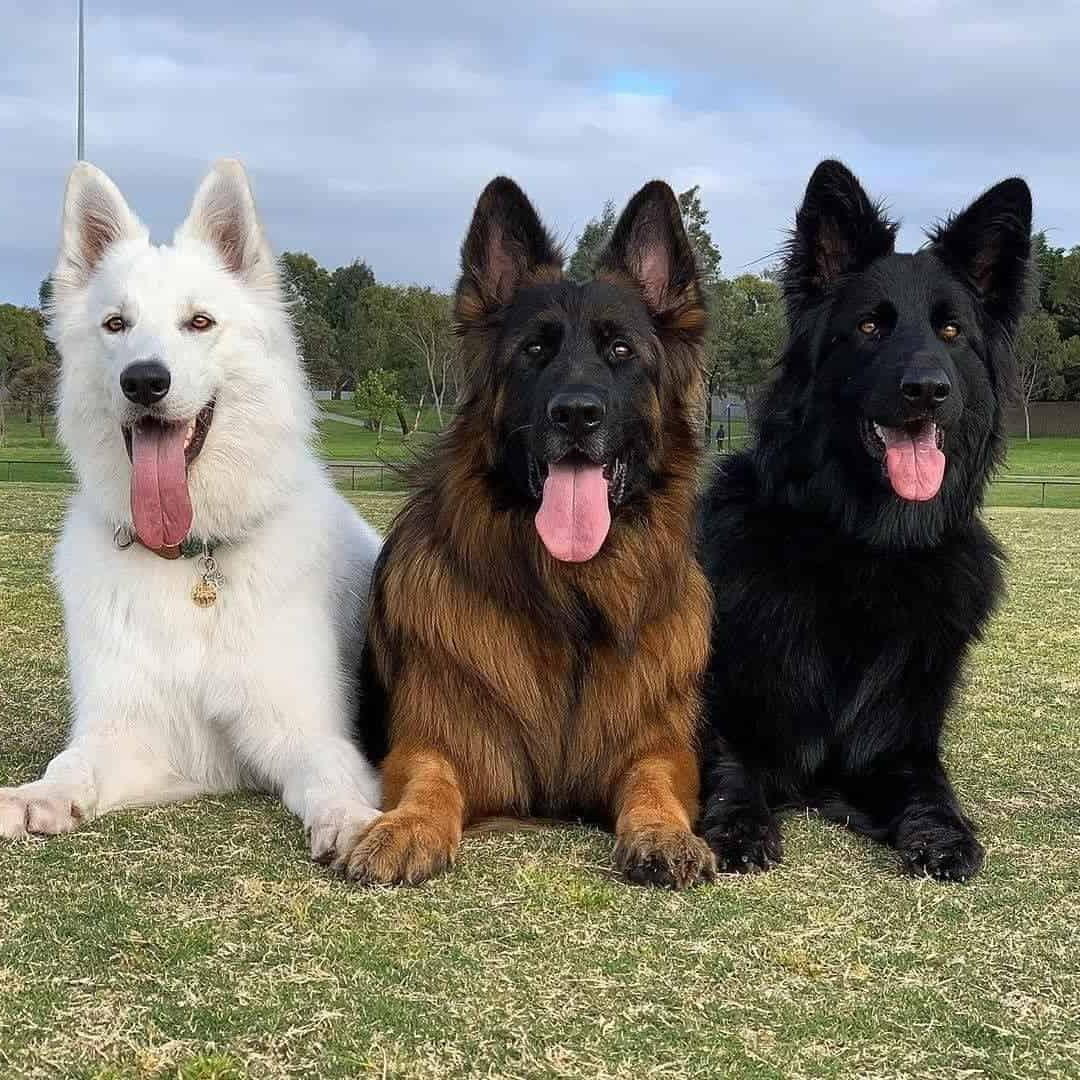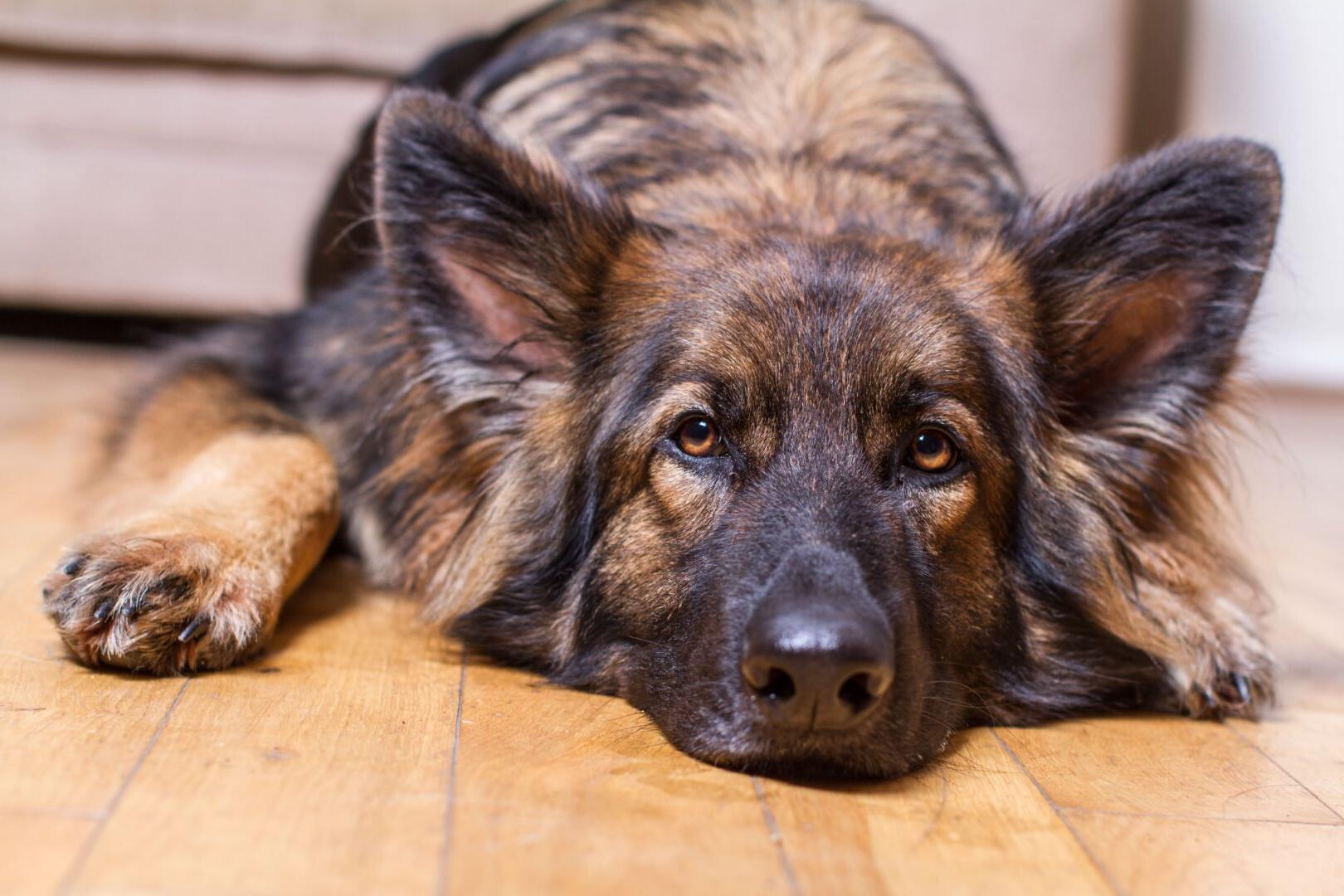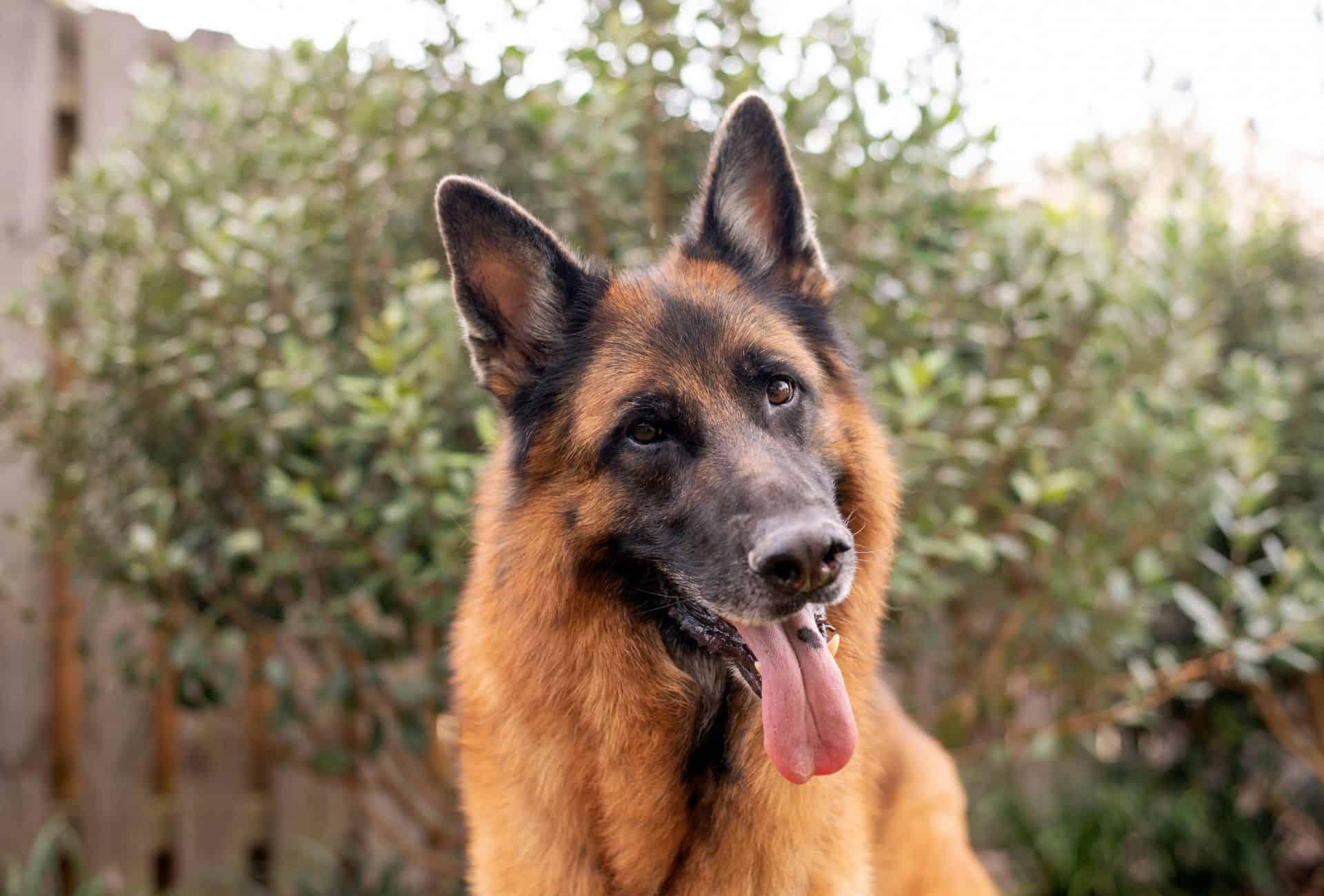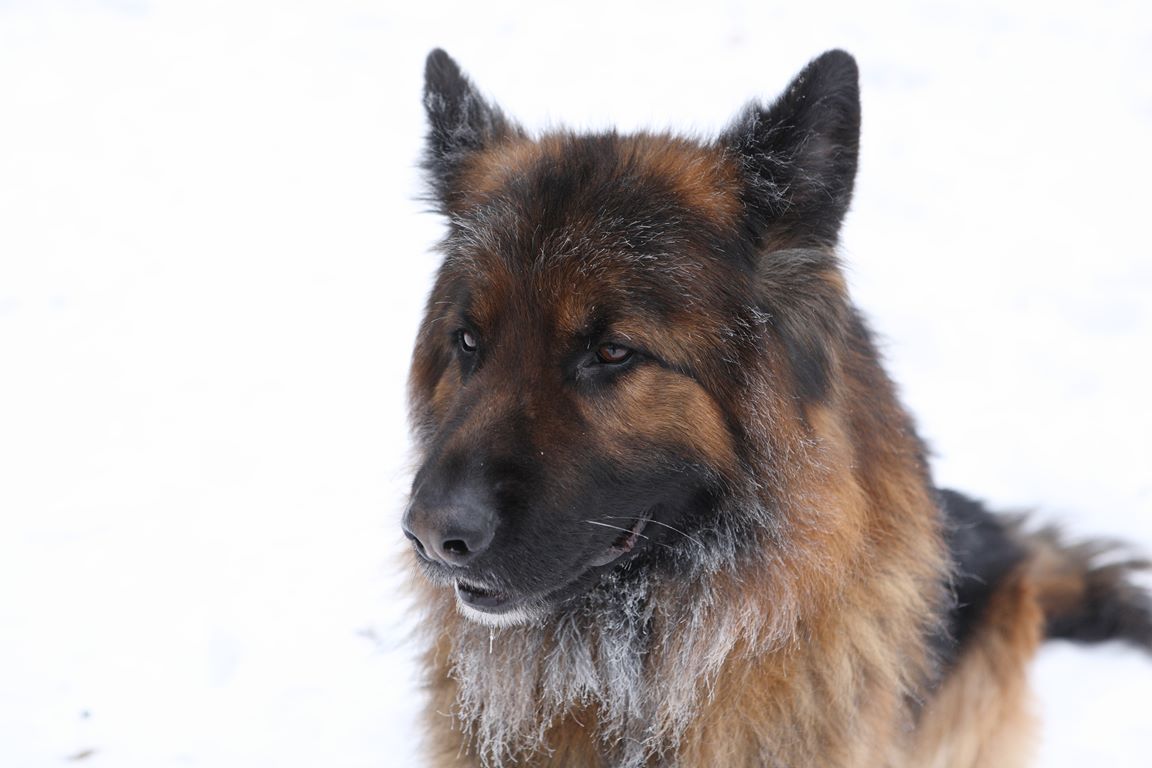- Breed Category: Working
- Country of Origin: Germany
- Average Height: Males 60-65 cm (24-26 in), Females 55-60 cm (22-24 in)
- Average Weight: Males 30-40 kg (66-88 lbs), Females 22-32 kg (49-71 lbs)
- Average Life Span: 9-13 years
- Grooming Requirements: Moderate, regular brushing needed
- Exercise Requirements: High, needs daily exercise
- Coat Type: Double coat, dense
- Coat Color Variations: Black and tan, sable, black
- Shedding Level: High, sheds year-round
- Ear Type: Erect, pointed
- Tail Type: Bushy, slightly curved
- Temperament: Loyal, intelligent, protective
- Intelligence Level: Very high, quick learners
- Barking Tendency: Moderate, alert barker
- Compatibility with Children: Generally good, with supervision
- Compatibility with Other Pets: Varies, early socialisation helps
- Training Ease: High, responds well to training
- Common Health Issues: Hip dysplasia, elbow dysplasia
- Dietary Needs: High-quality diet, protein-rich
- Energy Level: High, very active
- Drooling Tendency: Low
- Sensitivity to Weather: Tolerates cold better than heat
- Overall Maintenance Level: Moderate to high
- Original Purpose: Herding, guarding
- Year of Recognition by Kennel Clubs: 1908
- Famous Breed Representatives: Rin Tin Tin
- Apartment Friendly: Not ideal, needs space
- Best Suited For: Active families, working roles
- Cost of Ownership: Moderate to high
- Unique Traits: Versatile working abilities
- Cultural Significance: Popular in films, police work
- Popularity Rank: Consistently top 10 worldwide
Imagine a dog that’s not just a pet but a partner in every sense. The German Shepherd is exactly that, known for its intelligence, loyalty, and versatility. This article will dive into what makes this breed so special, from its fascinating history to the unique characteristics that set it apart. We’ll also cover how to care for these remarkable dogs, ensuring they thrive in your home.
The German Shepherd’s story begins in late 19th-century Germany. Originally bred for herding sheep, these dogs quickly gained a reputation for their work ethic and adaptability. Their keen intelligence and strong protective instincts made them ideal for various roles, from police work to search and rescue missions.
Early Development and Key Figures in the German Shepherd Breed

Early Development of the Breed
The German Shepherd’s journey began in the late 1800s, a time when Germany was bustling with innovation and change. Breeders were on a mission to create the perfect herding dog, one that could handle the rugged terrain and unpredictable weather. They wanted a dog that was not only intelligent but also strong and agile. The result was a breed that could work tirelessly, guiding and protecting livestock with ease.
Role in German Herding and Protection
These dogs quickly became indispensable in German agriculture. Their ability to think independently and respond to commands made them perfect for herding sheep. But their talents didn’t stop there. With their natural protective instincts, they soon found roles in guarding properties and even assisting in law enforcement. Their versatility was unmatched, making them a favourite among farmers and police alike.
Key Historical Figures
One of the pivotal figures in the development of the German Shepherd was Max von Stephanitz. A former cavalry officer, he was captivated by the breed’s potential. In 1899, he purchased a dog named Horand von Grafrath, who became the first registered German Shepherd. Von Stephanitz’s vision and dedication laid the foundation for the breed’s future, ensuring its place as one of the most respected and beloved dogs worldwide.
Physical Characteristics
German Shepherds are known for their striking appearance. They have a strong, muscular build, with a noble and confident stance. Their double coat, which can be either short or long, provides protection against the elements. Typically, they have a black and tan colouring, though other variations exist. Their expressive eyes and erect ears give them an alert and intelligent look, perfectly reflecting their keen nature.
Appearance and Unique Traits of the German Shepherd

Distinctive Appearance
German Shepherds are a sight to behold. They stand out with their strong, muscular build and a confident, noble stance. Their double coat, which can be either short or long, is typically black and tan, but you might also see variations like sable or all-black. These dogs have expressive eyes and erect ears that give them an alert and intelligent look, perfectly matching their keen nature.
Unique Physical Traits
What sets German Shepherds apart is their agility and strength. They’re built for action, with a body that can handle rigorous tasks. This makes them not just great companions but also excellent working dogs. Their physical prowess is matched by their mental sharpness, making them versatile in roles ranging from herding to police work.
Temperament and Behaviour
When it comes to temperament, German Shepherds are known for their loyalty and intelligence. They’re protective by nature, making them excellent guardians. These dogs are eager to learn and thrive on mental stimulation, so training them can be a rewarding experience. They form strong bonds with their families and are often gentle and patient with children, making them a great choice for families.
Personality Traits and Suitability as a Family Pet

Typical Personality Traits
German Shepherds are renowned for their loyalty, intelligence, and protectiveness. These traits make them not just reliable companions but also excellent working dogs. Their intelligence allows them to learn commands quickly, while their loyalty ensures they remain devoted to their families. Their protective nature makes them natural guardians, always alert to potential threats.
Suitability as a Family Pet and Working Dog
As family pets, German Shepherds are hard to beat. They thrive in environments where they can be part of the family, offering companionship and protection. Their versatility also makes them ideal working dogs, excelling in roles such as police work, search and rescue, and assistance for people with disabilities.
Interaction with Children and Other Animals
German Shepherds are generally good with children, often displaying patience and gentleness. They can be socialised to get along with other animals, though early training is key. Their protective instincts mean they may be wary of strangers, but with proper introduction, they can be friendly and sociable.
Training and Exercise Needs
These dogs are highly trainable, thanks to their intelligence and eagerness to please. Consistent training and mental stimulation are essential to keep them engaged. Regular exercise is crucial, as they have high energy levels and need activities that challenge both their minds and bodies. A daily routine of walks, play, and training sessions will keep a German Shepherd happy and healthy.
Training, Exercise, and Health of the German Shepherd

Importance of Early Training and Socialisation
Getting a head start on training and socialisation is crucial for German Shepherds. These dogs are naturally intelligent and protective, so early exposure to different environments, people, and other animals helps them grow into well-rounded adults. It’s all about setting the foundation for a confident and balanced dog.
Recommended Training Techniques
Positive reinforcement is the way to go with German Shepherds. They respond well to rewards like treats, praise, and play. Consistency is key, so keep training sessions regular and engaging. Incorporating mental challenges, like puzzle toys or advanced obedience tasks, can keep their sharp minds busy.
Daily Exercise Requirements and Activities They Enjoy
German Shepherds are high-energy dogs that need plenty of exercise. A mix of daily walks, playtime, and training sessions will keep them happy. They love activities like fetch, agility courses, and even swimming. Keeping them active is essential for their physical and mental well-being.
Health and Lifespan
With proper care, German Shepherds typically live between 9 to 13 years. Regular vet check-ups, a balanced diet, and plenty of exercise contribute to a healthy life. Be aware of common health issues like hip dysplasia and ensure they receive appropriate screenings and care.
Health and Care for German Shepherds

Common Health Issues
German Shepherds are prone to certain health issues, with hip and elbow dysplasia being the most common. These conditions can lead to arthritis and mobility problems. They may also face digestive issues and are at risk for bloat, a serious condition requiring immediate attention.
Average Lifespan and Health Tips
With good care, German Shepherds can live between 9 to 13 years. To keep them healthy, ensure they have a balanced diet rich in nutrients. Regular exercise is crucial, not just for their physical health but also for mental stimulation. Keep an eye on their weight to prevent obesity-related issues.
Preventative Care Recommendations
Regular vet check-ups are essential to catch any health issues early. Vaccinations, flea and tick prevention, and dental care should be part of their routine. Consider joint supplements to support their hips and elbows, especially as they age.
Grooming and Maintenance
German Shepherds have a double coat that sheds year-round, with heavier shedding in spring and autumn. Regular brushing, at least a few times a week, helps manage shedding and keeps their coat healthy. Bathing should be done as needed, and regular nail trimming and ear cleaning are also important.
Coat Care and Grooming for German Shepherds

Coat Care and Grooming Routines
German Shepherds boast a double coat that requires regular attention. Brushing a few times a week helps keep their coat healthy and reduces shedding. A slicker brush or an undercoat rake works wonders in reaching the dense undercoat. Bathing should be occasional, as over-bathing can strip natural oils from their skin.
Shedding and Seasonal Grooming Tips
Expect heavier shedding in spring and autumn. During these times, daily brushing can help manage the extra fur. Investing in a good vacuum cleaner is wise, as their shedding can be quite noticeable around the house. Regular grooming not only keeps your home cleaner but also strengthens the bond with your dog.
Diet and Nutrition
A balanced diet is crucial for a German Shepherd’s health. High-quality dog food, rich in protein and essential nutrients, supports their active lifestyle. Consider supplements like fish oil for a shiny coat and joint health. Always provide fresh water and monitor their weight to prevent obesity-related issues.
Nutritional Needs and Feeding for German Shepherds

Nutritional Needs for Optimal Health
German Shepherds thrive on a diet rich in protein, which supports their muscular build and active lifestyle. Look for high-quality dog food with meat as the first ingredient. Essential fatty acids, like omega-3 and omega-6, are also important for maintaining a healthy coat and skin.
Foods to Include and Avoid
Include lean meats, fish, and vegetables in their diet. Avoid foods high in fillers, artificial preservatives, and excessive grains, as these can lead to digestive issues. Treats should be given in moderation to prevent weight gain.
Feeding Schedules and Portion Recommendations
Feed adult German Shepherds twice a day to maintain energy levels and prevent bloat. Puppies may require three to four smaller meals daily. Portion sizes depend on their age, weight, and activity level, so consult your vet for personalised advice.
Fun Facts and Trivia
Did you know German Shepherds were the first guide dogs? Their intelligence and trainability make them perfect for this role. They also have a keen sense of smell, making them excellent search and rescue dogs.
Interesting Tidbits and Famous German Shepherds

Interesting Tidbits about the Breed
German Shepherds are not just known for their work ethic and intelligence; they also have some fascinating quirks. For instance, they have a unique gait called the “flying trot,” which allows them to cover ground efficiently. This breed is also known for its vocal nature, often using a range of sounds to communicate with their owners. Their loyalty is legendary, and they are known to form strong bonds with their families, often following them from room to room.
Famous German Shepherds in Media or History
German Shepherds have made their mark in history and media. One of the most famous is Rin Tin Tin, a dog rescued from a World War I battlefield who went on to become a Hollywood star in the 1920s. Another notable German Shepherd is Strongheart, one of the first canine movie stars, who paved the way for dogs in film. In history, a German Shepherd named Chips was awarded for his bravery during World War II, serving as a sentry dog and saving lives on the battlefield.
Final Thoughts

The German Shepherd is a remarkable blend of intelligence and loyalty. This breed’s versatility makes it a cherished companion and a reliable working dog. From herding sheep to starring in films, German Shepherds have proven their adaptability and dedication. Embracing a German Shepherd means committing to their exercise and training needs, ensuring a fulfilling partnership. Consider welcoming this extraordinary breed into your life, and experience the unique bond they offer.
Yes, German Shepherds can be great with children if they are socialized properly.
German Shepherds can be prone to hip dysplasia, bloat, and allergies.
Yes, German Shepherds are known for their protective nature and make great guard dogs.
Yes, German Shepherds shed a lot, especially during shedding season.
The cost of owning a German Shepherd can vary, but on average it can cost around €1000-€2000 per year for food, vet bills, and other expenses.
German Shepherds need at least 2 hours of exercise per day.
German Shepherds should be fed 2-3 cups of high-quality dog food per day, depending on their weight and activity level.
German Shepherds should be groomed at least once a week to keep their coat healthy.
The average weight of a German Shepherd is between 30-40 kg.
The average lifespan of a German Shepherd is between 9-13 years.

Lead Editor at JustusDogs, Ayesha is the proud mamma to a Cavalier Charles Spaniel named Sweetipie
